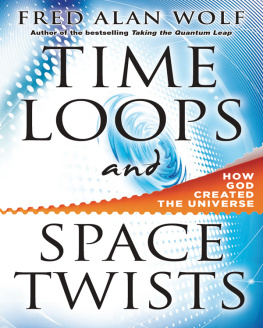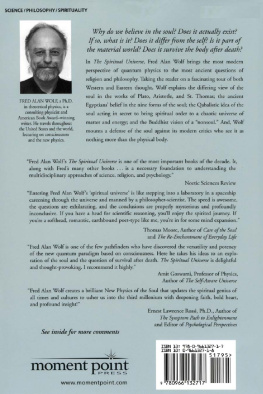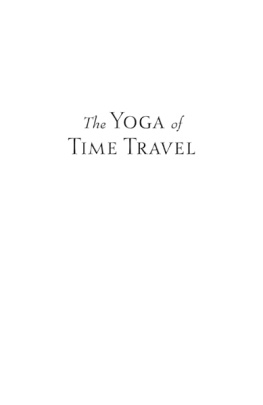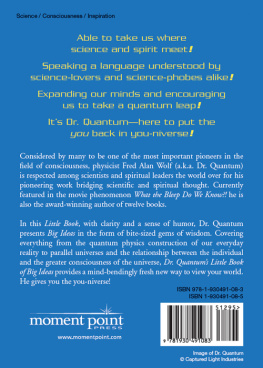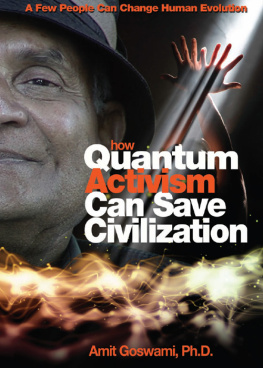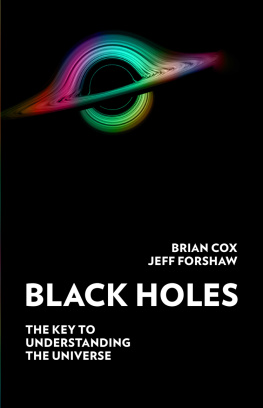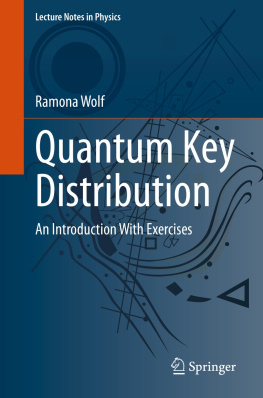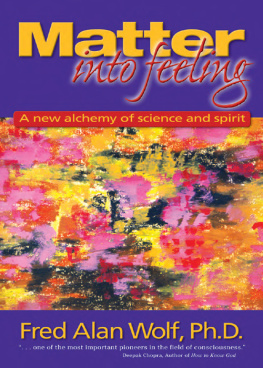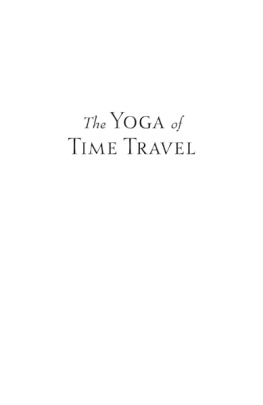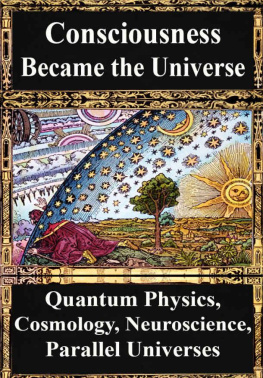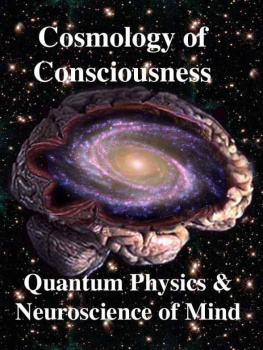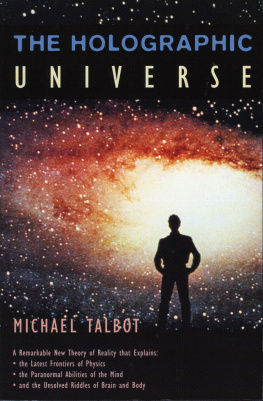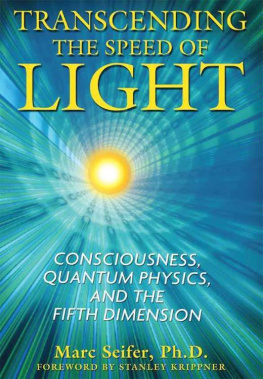Quantum physics could be daunting to the layperson, but Fred Alan Wolf has simplified and made these abstract concepts very comprehensible. In his new book, Time Loops and Space Twists: How God Created the Universe, he uses the wisdom from science and challenges our thoughts on religion while reminding us of true spirituality. His approach leads us in a new view of how consciousness and science are related.
Deepak Chopra author of Reinventing the Body, Resurrecting the Soul
I very much enjoyed reading Fred Alan Wolf's Time Loops and Space Twists... His use of barber poles to illustrate spinning particles is really great (what a lovely and clever idea), and he really does stick to his word and uses only high-school level math even when introducing difficult ideas about propagators, analytic continuation into the complex plane, and so on. That is quite a feat! I also think he does a nice job of telling readers when he is about to advance an idea or interpretation that might not command universal assent (or even majority opinion) among physicists. Overall the manuscript was a pleasure to read.... Using patience, pictures, and a healthy dose of good humor, Wolf walks readers through Feynman's wonderland, offering an accessible introduction to some of the most interesting and unexpected ideas at the heart of modern quantum theory.
David Kaiser, associate professor and lecturer, Department of Physics, Program in Science, Technology, and Society, MIT, and author of Drawing Theories Apart: The Dispersion of Feynman Diagrams in Postwar Physics

Copyright 2010
by Fred Alan Wolf
All rights reserved including the right to reproduce this work in any form whatsoever, without permission in writing from the publisher, except for brief passages in connection with a review.
Cover design by Adrian Morgan
Cover art by iStockphoto
Author photo by Lord of the Wind Film, LLC
Hierophant Publishing
www.hierophantpublishing.com
Library of Congress Control Number: 2010934672
ISBN 978-0-9818771-3-6
10 9 8 7 6 5 4 3 2 1
Printed in the United States
Contents
Preface
, and I will respond to your questions with as much clarification as I can.
In this book, you will learn some amazing new current views of time, space, and matter. In the final chapter, I offer some admittedly far-out notions about how a Mind fielda Mind of Godmay be found in the current musings of quantum field theory. All that you find in the first eleven chapters, as far as I know, accurately portrays our current understanding of the subjects, even though, as I admit at the start, these ideas perhaps seem crazy. I have based them on the currently accepted thinking about how matter came into existence in the first place. In the final chapter, I offer a rsum of the concepts found in the previous eleven chapters and then present some speculations about them that is not the currently accepted thinking but may lead to a new view of just what mind has to do with all this science. Hint: mind and time are related. If my ideas prove valid, perhaps the ancient division between the so-called sacred and profane or spirituality and science will be erased.
Acknowledgments
My initial acknowledgment might seem a little strange because I wish to recognize someone no longer among us who continues to inspire me, frustrate me, and keep me fascinated with quantum physics and marveling at its mysteries. Although I never had any social interaction with Richard Phillips Feynman, he has nevertheless been a prime influence on all my work. As I mention in this book, though I was not a student at Cal Tech during his teaching days, I was a Howard Hughes Fellow at Hughes Aircraft Company in Culver City in the late 1950s and early 1960s, while earning my advanced degrees (master's and doctorate in theoretical physics) at UCLA, and Professor Feynman, who went on to win the Nobel Prize, came once a week to Hughes to teach physics to us. I was immediately taken with his style of teaching and offhand sense of humor. But most of all, I was impressed by his intuition. When I got out of class each week, I studied whatever he had taught to figure out how what had seemed nearly incomprehensible to me before a Feynman intuitive romper-room class now seemed to make sense. Enough sense that I have devoted myself to teaching quantum physics to nonscientists and even attempting to explain in an intuitive, la Feynman, way the weird jumble of theories that make up the field. I continue in this task to this day. Thank you, Richard Feynman, wherever you may be.
I also wish to thank Anthony Zee (who is still with us), even though we never met, for his important book Quantum Field Theory in a Nutshell. It was a great teaching tool for me and got me interested in quantum field theory, a topic that I had dismissed early in my career as a physicist because I thought it too difficult to learn. I recommend it to all of you who wish to grasp the remarkable feats that make up the current theory.
Next I want to thank some people at Fermilab who were kind enough to grant me a whole day's visit with a number of physicists, both theoretical and experimental. Many thanks to: Elizabeth Clements, senior science communicator; Paddy Fox, theorist; William Wester and Aaron Chou, physicists; and Don Lincoln, a physicist on the DZero experiment at Fermilab. I especially enjoyed my talk with Paddy Fox regarding my crazy idea that possibly the Higgs boson won't be discovered because the Higgs field generates temporal zigzagging luxons appearing as tachyons. (For more on what all this means, see the last chapter.)
I also wish to thank my editor, John Loudon, for his careful editing, critical comments, and helpful suggestions, and Professor David Kaiser for reading the manuscript and making several important suggestions, corrections, and clarifications.
Finally, I wish to thank all of you, my readers, listeners, and viewers who, throughout my career as a writer, sometime TV and movie personality ( la my alter ego Dr. Quantum), seminar leader, and speaker, have been very supportive.
Chapter 1
Introduction
If I say they behave like particles, I give the wrong impression; also if I say they behave like waves. They behave in their own imitable way, which technically could be called a quantum mechanical way. They behave in a way that is like nothing that you have ever seen before.
Richard P. Feynman
I want to tell you a story. It is one on which we have come to rely, yet it is based on a number of persistent illusions. Maybe we learned it as children when our parents read to us. The story, like most children's stories, begins once upon a time... We don't have to go much further, for we are already seeing life through the illusion that there are such things as time was and now and time will be. Skip ahead to to see what Einstein had to say about this illusion.
Although it may not seem so, our story about time cannot be complete without also including our story of space and matter. For it turns out that space, time, and matter are intimately related. The ongoing discussion of how they are related is itself a story with many turns and twists along the way. Research into this story was and is today being carried out by physicists. We call this story quantum field theory, and the details of the story are called the standard model.
The story is far from complete, the details are ever changing, and, as we shall see, time has been singled out as perhaps the most important character in the ever-unfolding tale. We cannot talk about time without talking about space, however, and then these concepts beg the question: what fills time and space? The answer is matter, and so we face the braided triplet of time, space, and matter in telling the story. But first things first; so let me begin with an ancient view of timea look at what we call mythic time.
Next page
